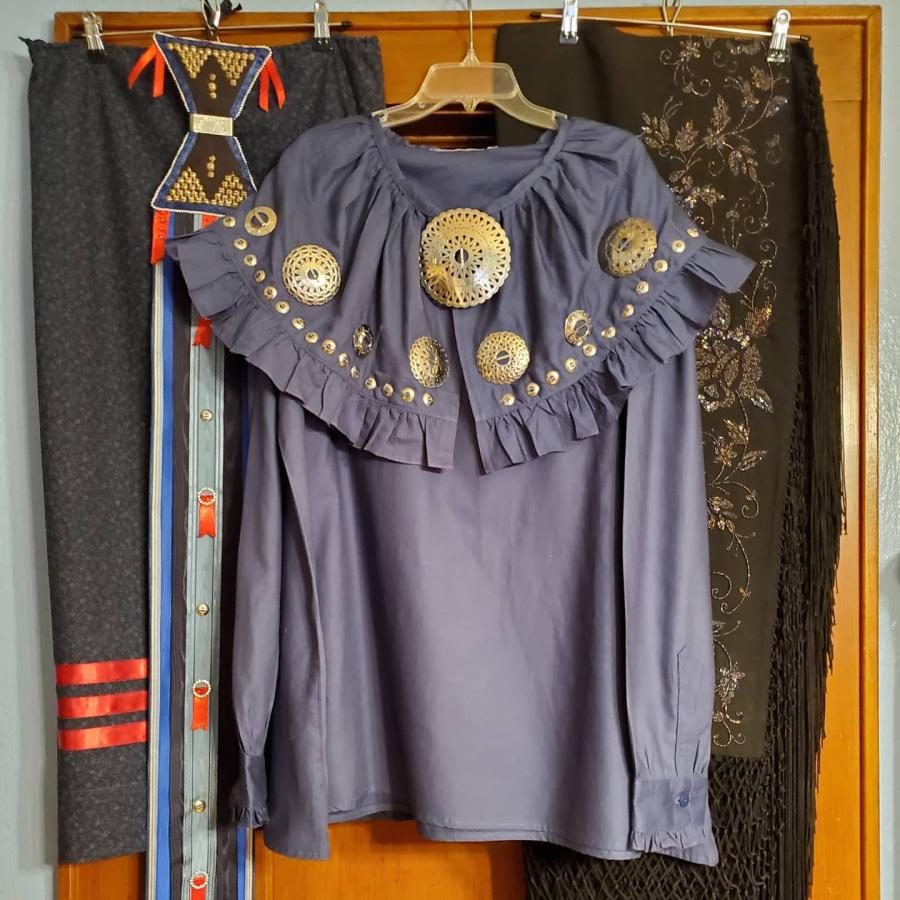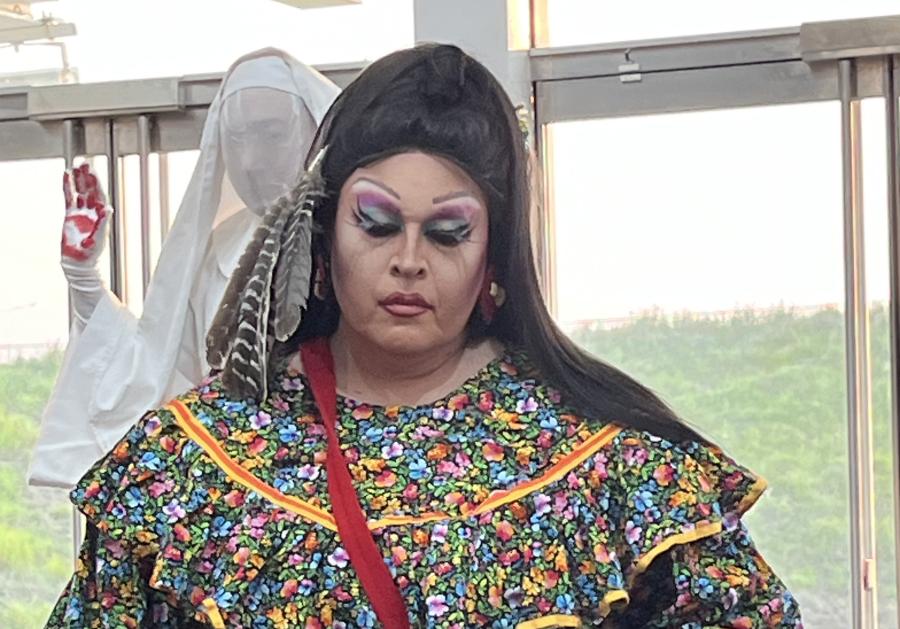On August 12, 1998, over five thousand Native Hawaiians and non-Hawaiian supporters gathered at `Iolani Palace to mark the 100th Anniversary of the illegal annexation of Hawai'i by the United States. The event was not celebratory, but was significantly political. The Indigenous Hawaiian people had gathered to voice their strong opposition to the overthrow of their Kingdom in 1893 by armed military forces of the U.S. and to present to the public the historic petition of 21,000 Kanaka to the U.S. Congress who, in 1898, successfully opposed the treaty of Annexation between the U.S. and the Provisional government of the Republic of Hawai'i. The Treaty of Annexation was never ratified by the U.S. Senate because the pro-annexationist forces could not muster the two-thirds vote needed for ratification.
It is ironic that as the United Nations celebrated in 1998 the 50th anniversary of the United Nations Declaration on Human Rights, the Indigenous peoples of Guam, Puerto Rico, American S...moa, Alaska and Hawai'i commemorated the anniversary of the theft of their lands by America. The gathering was also politically charged because of news that the long awaited United Nations Study on Treaties, Agreements and Other Constructive Arrangements Between Indigenous Peoples and Nation States had been tabled at the United Nations in Geneva on Thursday, July 30, 1998. The Treaty Study's final report, by the Special Rapporteur, Miguel Alphonso Martinez of Cuba, recommends that Hawai'i be relisted on the United Nations list of non-self governing territories, and decolonized pursuant to the UN procedures.
Nonetheless, in the United States, Hawaiians remain excluded from U.S. domestic policy providing Indians and Alaska natives with a limited right to self-determination. The U.S. definition of self-determination allows Indians and Alaskan Natives to "control" their lands and natural resources and to develop social and economic projects. This does not, however, apply to Hawaiians. Ka L...hui Hawai'i, the largest sovereignty initiative in Hawai'i, has been in existence for 11 years. It boasts over 10,000 Native citizens and a long track record of political advocacy in the local, national and international arenas.
Ka L...hui Master Plan - Ho'okupu a Ka L...hui Hawai'i
As a Native initiative for self-government, Ka L...hu is the best example of how self-determination can work in practice. Founded in 1987, Ka L...hui had expanded into a nation-wide structure with representative bodies throughout the archipelago by 1993.
In 1994, Ka L...hui created the most comprehensive plan for the attainment of Hawaiian sovereignty yet devised.
The Plan begins, in Part I, with an endorsement of fundamental principles, including a commitment to peace, disarmament, and non-violence. There is, as well, a recognition of the inalienable rights of Native Hawaiians and their descendants as called for in the United Nations Charter, the Draft Declaration on the Rights of Indigenous Peoples, and the International Covenants on Civil and Political Rights as well as Social, Economic, and Cultural Rights.
Rights to Self-Determination and Self-Development follow, including the right to engage freely in traditional activities. The crucial declaration in this section is the rejection of the wardship imposed by the United States as a result of the policy of Manifest Destiny in general and the Tyler doctrine in particular which extended that policy to the Pacific.
Later in the Master Plan, the rejection of wardship leads to the assertion of self-determination and sovereignty as attributes of Hawaiian human rights. Historically, Hawaiians had tried to escape wardship by entering the Democratic Party, that is, by embracing the reality of American citizenship as they left the dispossession of the overthrow behind them. Now, in 1994, the very existence of the Ka L...hui Master Plan revealed the failure of the Democratic Party to resolve the land claims and self-government issues of Hawaiians.
Part I concludes with multiple assertions of jurisdiction by Ka L...hui Hawai'i. These include the powers to determine membership, to administer justice, to exclude persons from the National Territory, to regulate trade, to tax, and to claim sovereign immunity. This section reveals how Ka L...hui views itself as a government, albeit one in exile and without U.S. recognition.
Part II addresses how Ka L...hui functions and lists, among its many accomplishments, the following: formation of a democratic and elective nation whose indigenous citizens exercise the franchise, by electing representatives, and thereby practice self-determination; the drafting of a constitution which includes spiritual, cultural, and traditional values; and the establishment of a respected international reputation including membership in the Unrepresented Nations and Peoples Organizations (U.N.P.O.) at the Hague.
In Part III, the Master Plan details the historical relationship with the United States which evolved from a policy of peace and friendship between 1826 and 1842 into a policy of colonialism under the Tyler Doctrine which imposed an American sphere of influence on Hawai'i to ward off the predations of Britain and France. All treaties and conventions negotiated between the U.S. and Hawai'i subsequent to 1842 favored the United States over Hawai'i.
At the 1893 overthrow of the Kingdom of Hawai'i by the forces of the United States and through the offices of the U.S. Minister at the time, the policy of armed intervention (exercised in 1874, and again in 1889, with the landing of U.S. troops on Hawaiian soil) resulted in the overthrow of the Hawaiian government (1893) and annexation of the Hawaiian Islands to the United States in 1898. No Native vote in Hawai'i was ever taken on annexation nor was any vote ever envisioned. In 1900, Hawai'i became American property.
At the creation of the United Nations in 1946, Hawai'i was listed as a Non-Self Governing Territory under U.S. Administration. Such status was considered a "trust" relationship whereby the United States had an obligation to promote the political aspirations of the Hawaiian people toward attaining self-government.
In 1959, Hawai'i became a state. The vote on statehood included only two options: continuation of Territorial status or Statehood. Neither commonwealth nor Independence appeared as choices on the ballot.
Of course, the imperial policy of the United States has continued to be one of non-recognition, denial, and wardship under the state of Hawai'i. This condition of wardship has meant, for example, that the federal government negotiates only with the state of Hawai'i rather than with the Hawaiian people when Hawaiian issues are at stake. The State, meanwhile, has used the lands of the Hawaiian Homes trust, some 200,000 acres, and the ceded lands trust, nearly two million acres, for its own purposes. In the meanwhile, the civil rights of Hawaiians continue to be abused as documented in reports by the Hawai'i Advisory Committee to the U.S. Commission on Civil Rights (December 1991).
Abandonment has been the policy of the Reagan, Bush, and Clinton Administrations. All three Presidents have asserted that no trust obligation on the part of the federal government exists. In practical terms, this has meant no oversight of state actions by the federal government. In 1993, the U.S. Congress passed the Apology Bill in which it is acknowledged that "...the indigenous Hawaiian people never directly relinquished their claims to their inherent sovereignty as a people or over their national lands to the United States, either through their monarchy or through a plebiscite or referendum."
Despite the hopefulness which greeted the passage of the Apology Bill in Hawai'i, nothing substantive has changed regarding federal policy toward Hawaiians. While "reconciliation" between the Hawaiian people and the American government is cited, no process or mechanism for reconciliation is included in the Bill.
In its Master Plan, Ka L...hui accepted the U.S. apology and suggested its own process for reconciliation. The goals of reconciliation are listed as follows:
Final resolution of the historic claims relating to the overthrow; to state and federal misuse of Native trust lands and resources; to violations of human and civil rights; and to federal ly held lands and resources.
The essential elements of reconciliation are: termination of the U.S. policy of non-recognition of Native Hawaiian self-determination, including repudiation of the policy of wardship.
Federal recognition of Ka L...hui Hawai'i as the Indigenous sovereign Hawaiian Nation, including recognition of the jurisdiction of Ka L...hui Hawai'i over its national assets, lands, and natural resources.
A commitment to decolonize Hawai'i through the United Nations process for non-self-governing territories.
Restoration of traditional lands, natural resources, ocean and energy resources is to be made to the Ka L...hui National Land Trust. These lands include Hawaiian Home Lands, the Ceded Lands, and federal ly held Lands. These lands shall be segregated from other public lands.
The process of termination of wardship is detailed in the Master Plan and involves legislation by the state to segregate all Hawaiian trust lands and assets from the general public lands and assets and transfer them to the National Land Trust of the Hawaiian Nation.
The National Land Trust includes all State-held trust lands, surface and ground water, marine resources and fisheries to the 200 mile limit, energy resources, airspace, and the trust assets of the many Private Hawaiian trusts, such as the Kamehameha Schools/Bishop Estate.
In the area of Economic Development, the Master Plan calls for the establishment of the National Land Trust, jurisdiction over its assets and revenues; the powers of taxation; community-based economic development; and international trade agreements.
On International Issues, the Plan reiterates the call for decolonization, self-government, and re-inscription on the U.N. list of Non-Self-Governing Territories.
In recent years the state of Hawai'i has attempted to subvert the Hawaiian Sovereignty movement through passage of a law authorizing the creation of the Hawaiian Sovereignty Elections Council (HSEC).
Subsequent legislative measures amended the law to delete all references to the right of the Hawaiian peoples to "form a nation of their own choosing" and authorizing the HSEC (a board appointed by the Governor) to initiate a vote and constitutional convention. The HSEC law also provided that nothing arising from the vote or convention would "alter...amend or change" anything in the State. These limitations mean that Hawaiians will have a paper nation, but no land, money or right of self-governance. The state provided $2 million dollars for the vote.
In response, sovereignty groups and Ka L...hui Hawai'i called for a boycott of the process. Sixty percent (60%) of eligible Hawaiian voters boycotted the election. An additional 10% voted no. Despite the overwhelming rejection of the state initiative, the HSEC incorporated a non-profit known as H... Hawai'i to proceed with a convention which will allow 85 Hawaiians to draft a constitution. This process denies the remaining 200,000 Hawaiians their right to create a nation of their own choosing.
Throughout Hawai'i, sovereign 'ohana (families) entities and groups are calling for the recognition of their right to self-determination as defined under the International Covenant of Civil and Political Rights (ICCPR). This means that the peoples themselves define their political status and their economic, social and cultural development.
As the Hawaiian sovereignty movement grows stronger, state and federal governments have increased their activities to circumvent Hawaiian nationhood. Police intimidation, arrests and criminal prosecution of Hawaiians are increasing as Hawaiians resort to acts of civil disobedience and resistance. Occupations by Hawaiians of traditional sacred places and burial grounds are expanding. Native Hawaiians have begun to use the Federal Apology Bill (American Public Law 103-150) as evidence that the Congress and President Clinton have admitted the illegality of the overthrow, violations of international law and deprivation of our right to self-determination.
As one Hawaiian kupuna (elder) put it, "read the Apology Bill -- we are the evidence -- not the crime. We'll never give up our lands or our culture and we'll never give up self-determination. We're fighting for our keiki (children) and mo'opuna (grandchildren) now."
Article copyright Cultural Survival, Inc.



